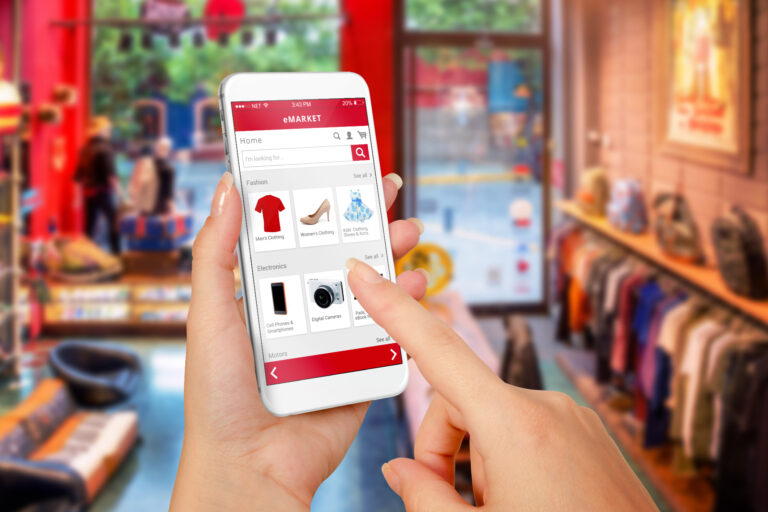Trends of the Modern D2C Model
The arrival and growth of the Internet have led to a real revolution in commerce. When the brand website became necessary, social networks and electronic means of payment appeared, and other transitions took place. The brand store has become accessible for large companies and entrepreneurs who run small businesses from their homes, like sewing clothes or making/repairing chairs. The D2C model has become much more natural because small companies can react quickly to any event.
But in the last decade, even this market had become saturated. Now startups, small, medium, and large manufacturers compete on the Internet. Many brands have turned to the “direct to the customer” model, and the competition for consumer attention has intensified.
Along with the development of the digital economy, the D2C sales model is changing. Let’s explore current trends in this area. Here are the main ones:
Omnichannel. It is not only and not so much about integrating various digital communication channels but the fusion of offline and online commerce. Even exclusively digital brands came to this realization. Customers who had the opportunity to visit the physical store, to hold the product in their hands are less likely to make returns and more often to buy again. The pandemic and the related consequences caused another trend: Opening an expensive brand store is becoming unnecessary, and companies instead rent spaces for their stores and showrooms. In addition, a physical presence strategy may not assume specific opening points of sale. Often brands enter into agreements with large retail chains, which simplify their path to the consumer.
Of course, these forms of interaction are combined and do not obviate the need for online promotion. Syntes Master Data Management platform fully supports Omnichannel aiming to integrate all brand sales channels without losing customers on their way to the purchase.
Community building. The unique advantage of the D2C model is the ability to build and maintain individual relationships with consumers. The amount of detailed data that is collected and accumulated is not possible to obtain in traditional retail. Increasingly, brand-community relationships are becoming two-way, where buyers and especially adherents work directly with the company to create new products and services. A prime example of this is the LEGO brand and the LEGO Ideas community. Each member of this community can feel like a designer of a construction set, and the company implements the best ideas for which more than 10,000 users have voted. The challenge for modern companies is community development and maintaining customer loyalty as the brand grows.
Increased profitability through vertical integration. Some time ago, a digital advantage for D2C brands was cheap customer contact. However, traffic is becoming more expensive. In addition, individual distribution and logistics are costly. Therefore, through vertical integration, brands need to improve profitability by transferring production operations under brand control or creating sales channels.
Customer experience management. Here you can’t do only with drawing up instructions for sellers and technical support. Modern CX-design covers all the interaction between a client and a company and all emotions and impressions he gets in the process. Customer experience design supposes strategy, metrics, and a personalized approach. In the possibilities of choice that a buyer has today, just regular service is not enough to keep his loyalty.
Big data mining and analyzing is a real revolution in marketing, made possible by the development of computing power. Now you can not only research but also truly effectively predict consumer behavior and offer him products at that very moment when he needs them the most. Information processing capabilities are constantly growing, and precisely in this area that the race between large corporations unfolds. But both medium and even small businesses can and should successfully use this trend. The primary purpose of the Syntes Master Data Management platform is big data management, and its simple implementation makes this process available to any enterprise, even without its own IT development department.
***
The D2C concept is a time-tested good business foundation. But every brand should remember how quickly the digital space is evolving. The events of the past two years have further accelerated this process and led to dramatic changes. The task of a modern brand is to track emerging trends and use them before competitors.
Syntes solutions will help your marketing department to cope with this task. We follow the development trends of the global D2C market and promptly help our clients implement the most promising innovations and technologies. You can transfer the entire cycle of online sales management to us, from strategy development to daily management of a branded online store or brand showcase on the marketplace. We work with well-known global and national brands, including Razer, Mail.ru Group, and Scarlett, and our field of activity is Russia, Europe, and North America. Using the Syntes Master Data Management platform will allow your brand to reduce operating costs and gain strategic advantages in the market competition.
Syntes, an international company, develops a next-generation MDM (Master Data Management) and PIM (Product Information Management) cloud platform and provides brands and manufacturers with services for creating, managing and automating D2C (Direct-to-Customer) sales and marketing channels. Syntes solutions and services are used by the world’s leading brands and manufacturers of consumer and business products such as Razer, Scarlett, Pantone, X-Rite, AVerMedia and others. Syntes is a registered trademark of Syntes, Inc.
Mentioned trademarks and company names are registered trademarks of their respective owners.
© Copyright Syntes, Inc. Copying, reprinting, and any reproduction is permitted only with the written permission from Syntes, Inc.






